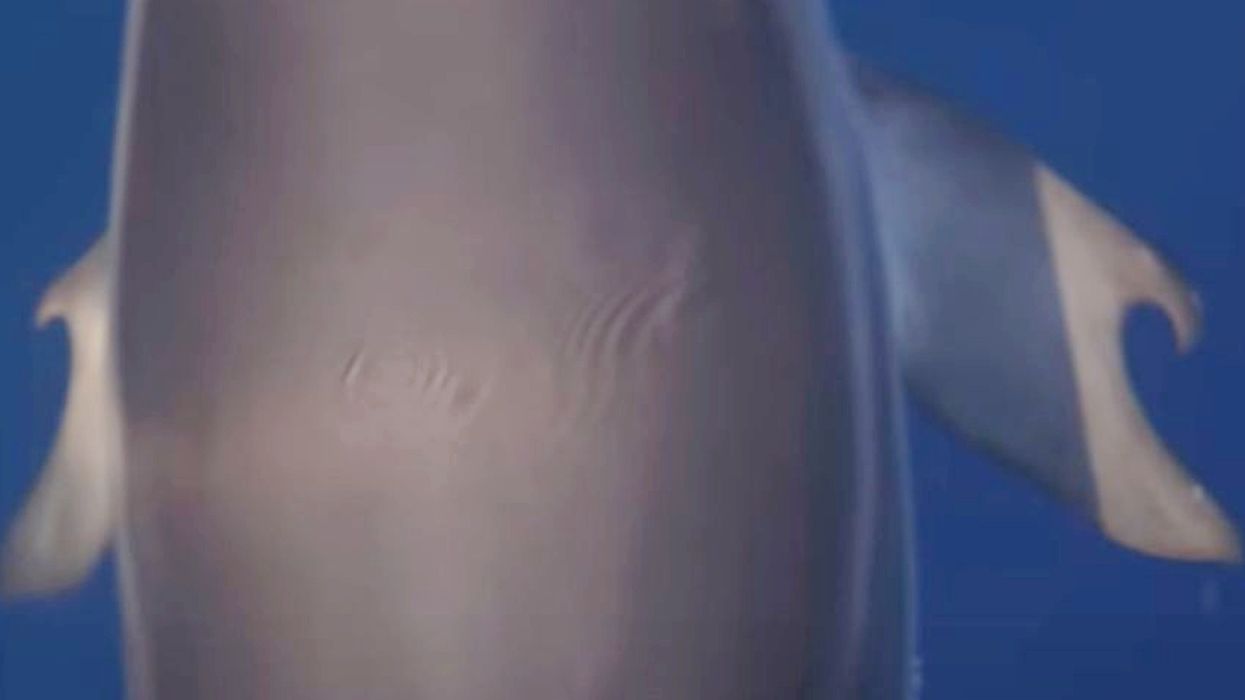Harriet Brewis
Dec 13, 2023

The unique marine mammal was spotted in the Gulf of Corinth last summer
(Alexandros Frantzis/Pelagos Cetacean Research Institute)
Animals with human attributes have traditionally been a trope reserved for Disney movies or dystopian sci-fi projections, but a new discovery suggests that life can do a pretty convincing imitation of art.
Over the summer, researchers spotted a dolphin off the coast of Greece which had developed strange, hooked thumbs carved out of its flippers.
The scientists, from the Pelagos Cetacean Research Institute, said they spotted the unusual animal on two occasions as they conducted boat surveys in the region.
Alexandros Frantzis, president of the research institute, noted that despite the unique shape of its flippers, the mammal kept up with the rest of its group and was seen "swimming, leaping, bow-riding, playing" with its peers.
"It was the very first time we saw this surprising flipper morphology in 30 years of surveys in the open sea and also in studies while monitoring all the stranded dolphins along the coasts of Greece for 30 years," Frantzis told Live Science.
He managed to capture the anomaly on camera as the mammal swam happily along the Gulf of Corinth, a semi-enclosed pocket of the Ionian Sea which is home to a unique mixed-species society of dolphins.
This includes common dolphins (Delphinus delphis), Risso's dolphins (Grampus griseus) and striped dolphins (Stenella coeruleoalba).

Some 1,300 striped dolphins – including our thumbed friend – live in the gulf, where they are isolated from the rest of the Mediterranean population, Live Science reports.
Frantzis told the website that the deformed flipper is most likely "the expression of some rare and 'irregular' genes" that emerged as a result of constant interbreeding.
Lisa Noelle Cooper, a mammalian specialist, agreed that the defect most likely stemmed from the dolphin’s genes.
"I've never seen a flipper of a cetacean that had this shape," Cooper also told Live Science. "Given that the defect is in both the left and right flippers, it is probably the result of an altered genetic program that sculpts the flipper during development as a calf."
Cetaceans are a group of marine mammals that includes whales, dolphins and porpoises, and which have distinct forelimbs with more finger bones than other mammals.
Bruna Farina, a paleobiologist, explained in an email to Live Science that these bones are arranged into human-like "hands" encased in a soft-tissue flipper.
So, in fact, all dolphins have thumbs, they’re just not as prominent as ours and are concealed by their flippers.
Cooper explained that whereas human fingers fuse into paddle-shaped hands in the womb – with cells that die off before we are born – cells build up around dolphins' forelimb bones to form flippers.
"Normally, dolphins develop their fingers within the flipper and no cells between the fingers die off," she said.

But the odd one out spotted in the Gulf of Corinth seems to be missing fingers and some of the tissue that would usually encase them.
"It looks to me like the cells that normally would have formed the equivalent of our index and middle fingers died off in a strange event when the flipper was forming while the calf was still in the womb," Cooper said.
However, she noted that the dolphin still possessed a fourth digit and, of course, a thumb.
"The hook-shaped 'thumb' may have some bone inside of it, but it certainly isn't mobile," Cooper said, pointing out that "no cetaceans have mobile thumbs."
Still, she added: "It is lovely to see that this animal is thriving.”
And we can all give a big thumbs-up to that.
Sign up for our free Indy100 weekly newsletter
Have your say in our news democracy. Click the upvote icon at the top of the page to help raise this article through the indy100 rankings
Top 100
The Conversation (0)













